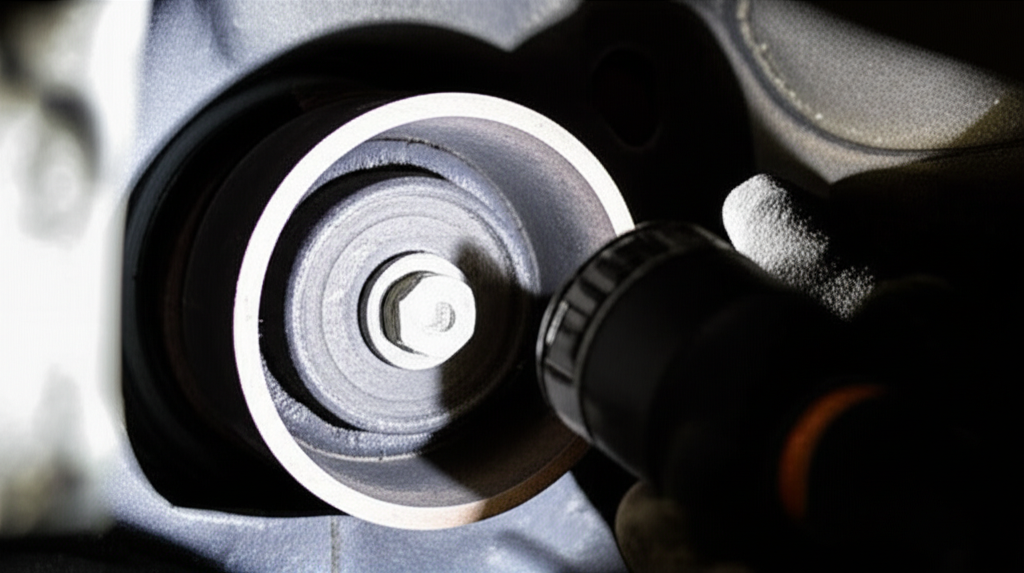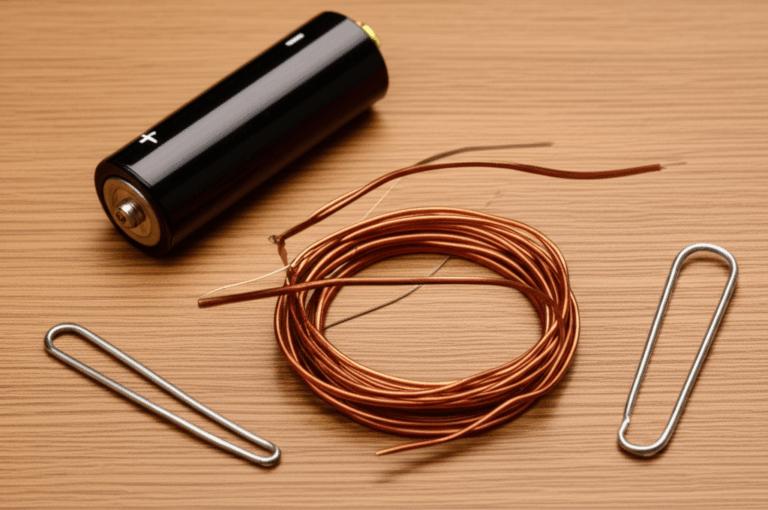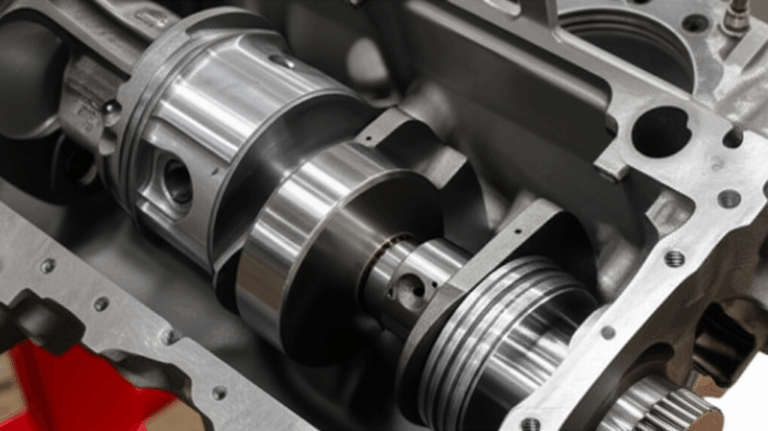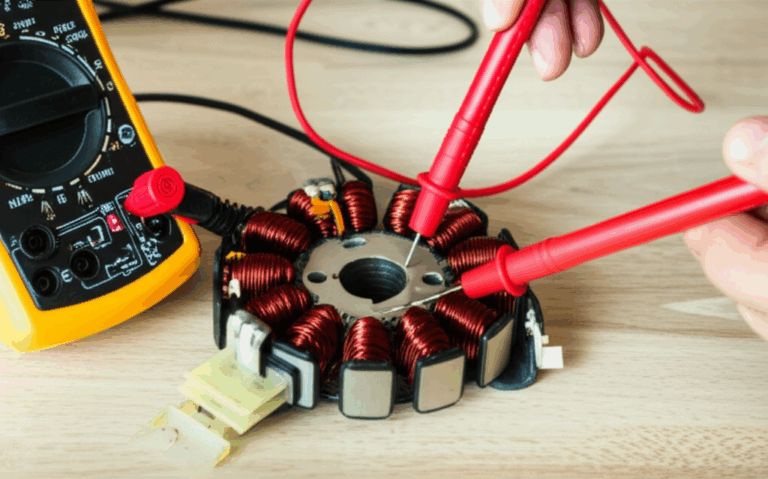
How Long Do Motor Mounts Last? Lifespan, Symptoms, and Replacement Guide
Every engineer and procurement manager eventually bumps into the same practical question. How long do motor mounts last in the field, what shortens their life, and when should you plan a replacement to protect system performance and downstream components? It’s not just a comfort issue. Mounts anchor the engine and transmission, they control vibration transfer to the chassis, and they shield the drivetrain and subframe from excessive loads. Ignore them and you court bigger failures.
You want a clear, technical answer you can trust. Let’s break it down using a simple model: Problem → Explain → Guide → Empower. You’ll get concrete ranges, why those ranges stretch, what symptoms matter, and the decisions that reduce risk and cost over a platform’s lifecycle.
In the process we will connect the NVH realities you feel in a vehicle to the physics behind vibration isolation and resonance. That same vibration story influences the reliability of adjacent parts like exhaust hangers, bushings, and even electric drive units in hybrid platforms. In high-integration vehicles, mount behavior can affect motor stability and noise from electromagnetic forces within the stator and rotor. Solid fundamentals make better purchasing and maintenance decisions.
In This Article
- Introduction: Understanding Motor Mounts and Their Importance
- The Average Lifespan of Motor Mounts
- Key Factors That Influence Motor Mount Lifespan
- Common Symptoms of Failing Motor Mounts
- The Dangers of Driving with Bad Motor Mounts
- When to Inspect and Consider Replacement
- Motor Mount Replacement: What to Expect
- Tips to Extend Motor Mount Lifespan
- Conclusion: Prioritizing Your Vehicle’s Health
I. Introduction: Understanding Motor Mounts and Their Importance
A. What are Motor Mounts?
Motor mounts secure the engine and transmission to the frame or subframe. They look simple. A mount is usually a rubber or elastomer block bonded to metal plates or brackets. Many modern vehicles use hydraulic motor mounts that include a fluid-filled chamber to better damp vibrations at idle and certain RPM bands. Some platforms add a torque strut mount to control fore-aft engine movement during acceleration and deceleration.
These parts do three jobs at once:
- Support static weight of the engine and transmission.
- Isolate and damp vibration from combustion or electric torque ripple.
- Limit engine movement so you don’t hammer the exhaust, driveshafts, crossmember, and wiring harnesses.
B. Why are they crucial for your vehicle?
They protect people and parts. Good mounts keep the cabin quiet and comfortable. They protect the chassis from resonance that can fatigue metals and accelerate wear. They also maintain alignment between the engine, transmission, and driveline which keeps shifting crisp and reduces stress on CV joints, the exhaust system, and the engine cradle. Worn mounts can lead to engine sag or transmission sag which misaligns the exhaust and driveshaft and raises the risk of metal-to-metal contact.
If you design electric or hybrid drivetrains you already live and breathe NVH. The mount system and the electromagnetic forces inside the motor play a tug of war with vibration. Precision in the motor’s stator, rotor, and lamination stack lowers source vibration and helps the mounts do less work. The quality of the motor core laminations matters because it directly affects torque ripple and magnetic force harmonics that show up as chassis vibrations.
II. The Average Lifespan of Motor Mounts
A. General Mileage & Timeframe Expectation
Most motor mounts last 50,000 to 100,000 miles. A time-based view tells a similar story. Many mounts live 5 to 7 years in typical conditions. That range reflects real-world variation in temperature, load, material, and driving style.
Hydraulic engine mounts often last on the shorter end when exposed to high heat or when fluid seals age. Rubber motor mounts can outlast hydraulic designs if heat and oil contamination stay low. Polyurethane motor mounts usually outlast rubber in pure durability terms, though they transmit more vibration into the chassis which reduces ride comfort.
B. Why “Average” is Variable
There is no single answer because mounts sit in a complex environment. Heat cycles harden or soften elastomer. Oil leaks degrade rubber and hydraulic components. Aggressive driving amplifies torque loads and bending moments across the mounting bracket. Road salt attacks metal hardware and can lead to corrosion that weakens the bonded interface. Different vehicles push mounts in different ways. A diesel truck with high engine torque and more vibration challenges mounts far more than a small gasoline sedan.
Engineers think in terms of load spectra and material fatigue. A mount fails when microcracks in the rubber or elastomer propagate, when a hydraulic chamber leaks, or when the bond between rubber and metal lets go. If you plot torque events against time and temperature you get a real picture of expected life. That picture explains why some mounts die at 40,000 miles after a small oil leak while others run 150,000 miles in mild climates.
III. Key Factors That Influence Motor Mount Lifespan
A. Driving Habits & Conditions
1) Aggressive driving
Hard acceleration and abrupt braking create bigger torque swings. Those swings force the engine to rock on the mounts which increases shear strain and compressive stress in the elastomer. Repeated overload shortens life.
2) Frequent stop-and-go traffic
Constant launch and stop cycles never let the system settle. Heat builds in the engine bay. Vibration at idle repeats for long periods. Hydraulic motor mounts see more frequent pressure events in their fluid-filled chambers.
3) Road conditions
Potholes and rough roads hammer the subframe. That shock goes into the crossmember and then into the engine cradle and mounting bracket. A harsh hit can tear a worn mount. Chronic rough roads act like a slow-motion impact test repeated every day.
4) Climate
Extreme heat accelerates elastomer aging. Cold weather makes rubber stiff and brittle which transfers more vibration at startup and can crack rubber over time. Road salt promotes corrosion of fasteners and the metal plates of the mount which undermines structural integrity.
B. Vehicle Type & Engine Size
1) Heavier vehicles and more powerful engines
More mass and more torque create more load on the mounts. A V8 or diesel at low RPM produces high torque pulses that drive engine rocking movement. That motion stresses the mounts and the torque strut mount, especially during towing or payload operation.
2) Diesel engines
Diesel engines produce stronger low-frequency vibrations. Those vibrations hit the natural frequency of softer mounts more readily. The result is higher vibration amplitude and more heat in the elastomer which speeds material degradation.
3) Hybrid and EV platforms
Instant torque can snap the powertrain against the mounts faster than a combustion engine. Design teams often specify stiffer side motor mounts and a robust torque strut to handle these load steps. Electric drive units also introduce electromagnetic noise that the mount system must help isolate.
C. Motor Mount Material & Type
1) Rubber mounts
Standard rubber mounts provide good vibration dampening at a fair cost. They absorb harshness well which improves ride comfort. Rubber degrades with heat and oil contamination which limits lifespan near higher-temperature exhaust components.
2) Hydraulic or fluid-filled engine mounts
Hydraulic motor mounts contain an internal fluid path that resists motion at specific frequencies. They reduce engine vibration at idle and during low-RPM torque events which improves perceived NVH. Seals can leak with age which turns a tuned hydraulic mount into a weak rubber mount overnight.
3) Polyurethane and solid mounts
Polyurethane motor mounts last longer and control engine movement tightly under high torque. They transmit more vibration to the chassis. Solid mounts lock the powertrain in place which helps track performance but reduces ride comfort and raises cabin noise. Use solid solutions only when vibration dampening is not a priority.
D. External Damage & Leaks
1) Oil or transmission fluid leaks
Oil contaminates rubber which softens the material and breaks down the rubber-to-metal bond. Transmission fluid leaks cause similar damage to the transmission mount. Fix leaks early to extend mount life.
2) Collisions or accidents
Even a low-speed incident can shift the engine cradle or bend a mounting bracket. That misalignment loads mounts unevenly which accelerates wear. After a collision always inspect motor mounts.
IV. Common Symptoms of Failing Motor Mounts
A failing mount rarely hides for long. The clues arrive in your hands, ears, and seat.
A. Visible Engine Movement
- Engine rocking or jumping excessively when you blip the throttle in Park or when you shift from Drive to Reverse.
- Engine sag or transmission sag that changes the alignment of the exhaust system and driveshaft.
B. Increased Vibrations
- Engine vibration at idle that you feel in the steering wheel or the seats.
- Steering wheel vibration at certain RPMs that wasn’t there before.
- Vibration dampening failure where the cabin feels rough even on smooth roads.
C. Audible Noises
- Clunking noise when accelerating or braking as the engine hits movement limits.
- Knocking sound from the engine bay over bumps because the engine assembly shifts.
- Rattling noise under the hood that follows throttle inputs or gear changes.
- Banging noise on bumps that wasn’t present with fresh mounts.
D. Shifting & Performance Issues
- Jerking during gear shifts in automatic transmissions due to powertrain rocking.
- Difficulty engaging gears in manual transmissions if the engine and transmission shift relative to the shifter linkage.
- Loss of traction or wheel hop on hard acceleration because the drivetrain alignment changes.
E. Misaligned Engine/Transmission
- Exhaust system stress and contact marks near the subframe or crossmember.
- Premature component wear on hoses, wiring, and bushings near the engine cradle.
- Alignment issues that show up as persistent NVH after you replaced the usual suspects.
You may also see fluid stains if a hydraulic mount failed. A collapsed mount can produce metal-to-metal contact which transmits a sharp, high-frequency buzz through the chassis.
V. The Dangers of Driving with Bad Motor Mounts
You can drive with a worn mount for a while. You probably should not. The risk stacks up fast.
- Accelerated wear on other components
The engine moves more than it should. That motion pulls on hoses and wiring. It twists the exhaust flex joint and loads the driveshafts at odd angles. You pay for the mounts now or you pay for several parts later.
- Reduced ride comfort and increased cabin noise
Vibration enters the cabin through the frame. The car feels older than it is. Customers notice.
- Potential for further damage
Engine sag can lead to metal-to-metal contact at the subframe. You might crush the exhaust against the chassis or crack a mount bracket.
- Safety hazards
A severe failure can let the engine shift suddenly under load. That can upset handling during a maneuver. Catastrophic failure at high speeds is rare yet it is possible when several mounts fail together.
For engineering teams, remember the system view. A vibration path can also excite panel resonance and even motor electromagnetic noise in hybrids. Good mounts reduce amplification of the source. Good electromagnetic design reduces the source itself. Precision in the stator core lamination and rotor core lamination reduces torque ripple which lowers NVH. Thoughtful selection of electrical steel laminations reduces core loss and heat which stabilizes the motor’s vibration signature over temperature.
VI. When to Inspect and Consider Replacement
A. Regular Maintenance Checks
You don’t need to tear the car apart. A quick look during oil changes goes a long way.
- Inspect for cracks in rubber or separation at the rubber-to-metal interface.
- Use a pry bar gently to see if a mount separates easily which indicates internal tearing.
- Look for leaked fluid on hydraulic mounts.
- Check for engine sag that changes axle angles or exhaust clearance.
A 12-month or 12,000-mile check keeps you ahead of failure. High mileage vehicles deserve closer scrutiny because ageing motor mounts become brittle.
B. As Soon As Symptoms Appear
If you hear knocking or feel a rough idle that wasn’t there, don’t wait. Harshness often means a mount lost its damping ability. That’s the phase where collateral damage begins. Stop-and-go clunks and shudder during acceleration are classic worn motor mount symptoms.
C. Professional Diagnosis & Inspection
A mechanic will drive the vehicle and listen for clunks, then perform a visual inspection on a lift. They can power-brake the engine to observe excessive engine movement safely. If they suspect a transmission mount, they will check for transmission rocking movement and any shift cable misalignment. A professional inspection helps you avoid chasing the wrong problem like misattributing a misfire-induced rough idle to mounts.
For design teams or fleet managers, integrate NVH checks into preventative maintenance. Track complaints such as rough idle car, increased cabin noise, and steering wheel vibration in your service logs. These signals often correlate with mount wear and help you schedule replacements before other components take a hit.
VII. Motor Mount Replacement: What to Expect
A. Typical Cost Ranges (Parts + Labor)
Costs vary by vehicle. Parts typically run:
- Rubber motor mounts: $30 to $150 per mount for common vehicles.
- Hydraulic motor mounts: $70 to $350 per mount depending on design and brand.
- Transmission mounts: $40 to $200 per mount.
Labor depends on access:
- Simple front motor mount on a transverse four-cylinder: 1.0 to 2.0 hours.
- Rear motor mount buried under crossmembers: 2.0 to 4.0 hours or more.
- Transmission mount: 1.0 to 2.5 hours.
Total job cost often falls between $200 and $800 for one or two mounts on mainstream vehicles. Luxury platforms or tightly packaged engine bays can cost more. Regional labor rates and part availability influence these numbers.
B. Importance of Quality Replacement Parts (OEM vs. Aftermarket)
OEM motor mounts match the original stiffness and damping curve. They usually cost more. Aftermarket parts range from budget rubber to premium hydraulic designs. You want a mount that matches the OEM durometer and hydraulic tuning. Too soft leads to excess engine movement. Too stiff transmits vibration.
For high-torque applications, performance-oriented mounts with polyurethane may be justified. They control excessive engine movement and reduce wheel hop during launches. They will increase NVH. Communicate that trade-off clearly to stakeholders and customers.
C. DIY vs. Professional Replacement
DIY replacement is possible on many vehicles if you have:
- A floor jack with a wood block to support the oil pan or transmission case.
- Hand tools and torque specs from a service manual.
- Safe jack stands and a level work surface.
Professional replacement makes sense when:
- Access is difficult due to subframe or crossmember topology.
- The mount requires engine support from above.
- You need an alignment check after addressing engine cradle or subframe components.
You should never lift on the oil pan directly without a broad support. You should always torque fasteners to spec to avoid preload that shortens mount life.
VIII. Tips to Extend Motor Mount Lifespan
A. Regular Vehicle Maintenance
- Address oil leaks quickly. Oil contamination is one of the fastest ways to destroy rubber mounts.
- Replace coolant hoses and clamps before they leak onto mounts near the radiator or under the thermostat housing.
- Keep your engine tuned to reduce rough idling that shakes mounts all day.
B. Mindful Driving Habits
- Use smooth acceleration and deceleration whenever possible.
- Avoid potholes and rough roads if you can. Slow down when you cannot avoid them.
- Let the engine warm a bit in extreme cold to reduce stiffness-induced shock to the rubber.
C. Promptly Address Other Vehicle Issues
- Shifting problems in an automatic or clutch issues in a manual can increase shock loads on mounts. Fix them early.
- Resolve exhaust system stress or rattles quickly. A misaligned exhaust can pry on a tired mount during every heat cycle.
- Replace worn suspension bushings and control arm components. Harsh impacts from a loose suspension load the engine cradle and the mounts.
D. Engineering and Procurement Considerations
For product teams, a mount lives longer when the system upstream runs smoothly.
- Reduce source vibration
Well-balanced rotating assemblies reduce NVH. Standards like ISO 1940 define rotor balance quality. A smoother engine reduces the workload on the mount.
- Manage temperature
High underhood temperatures accelerate elastomer ageing. Heat shielding near exhaust components protects mounts and wiring. Material choice and placement matter more in turbocharged or diesel platforms that run hotter.
- Choose the right material
Rubber compounds fall under standards such as ASTM D2000 which classifies automotive rubber materials by physical properties and heat resistance. Make sure the durometer and oil resistance match the environment near the mount. Hydraulic mounts must use fluid and seal materials that survive the engine bay’s heat and chemical exposure.
- Coordinate with electric drive teams
In hybrid or EV designs, coupling between electromagnetic torque ripple and structural modes can amplify vibration. Better lamination stacks and core geometry help. Precision and consistency in lamination stacks reduce harmonic forces at their source. See also how a well-made stator core lamination and a tight-tolerance rotor core lamination lower torque ripple at the motor level. High quality electrical steel laminations and thoughtful slot/pole combinations cut magnetic noise which makes mount tuning easier.
IX. Conclusion: Prioritizing Your Vehicle’s Health
Let’s close with the Expert Consultant framework so you leave with a clear plan.
Problem
You asked how long motor mounts last and what to do about them. The short answer is 50,000 to 100,000 miles or 5 to 7 years for many applications. The long answer depends on driving style, climate, engine torque, and material selection. Worn mounts show up as engine rocking movement, clunking noise when accelerating, rough idle, and rattling noise under the hood. Bad mounts lead to drivetrain integrity problems and make other components age faster.
Explain
Mounts isolate vibration and control engine movement. Rubber and hydraulic designs trade durability against comfort. Heat, oil leaks, potholes, and aggressive loads shorten life. Diesel engines and heavy vehicles stress mounts more. Polyurethane or solid mounts handle torque better but pass more vibration into the chassis. In hybrids and EVs, mount life also ties back to electromagnetic smoothness and torque ripple from the motor and inverter controls. That connection underscores why high-quality motor core laminations matter at the source of NVH.
Guide
- Watch for visible engine movement, steering wheel vibration at idle, clunking under load, and banging noise on bumps.
- Inspect mounts annually. Check for cracks, oil contamination, and hydraulic leaks.
- Replace with quality OEM or equivalent parts that match the original stiffness. Consider polyurethane only when the use case accepts more cabin vibration.
- Fix leaks and shifting issues quickly to protect mounts.
- In platform development, coordinate NVH efforts across powertrain, exhaust, and motor design to balance isolation and source reduction.
Empower
Here are your next steps:
- If you see symptoms, schedule a professional inspection soon. Ask for a power-brake test to observe excessive engine movement.
- Budget for replacement if your vehicle sits past 80,000 miles with mounting symptoms. Expect $200 to $800 for common scenarios.
- For engineering and procurement teams, review mount material specs against environment and duty cycle. Confirm durometer, heat resistance, and hydraulic tuning match your NVH targets. Align mount tuning with the motor’s electromagnetic profile and inverter control strategies.
- Document a preventative maintenance schedule. Check mounts every 12,000 miles and after any oil leak or collision.
- When sourcing mounts and adjacent components, include vibration test requirements and heat/oil exposure protocols that reflect real duty cycles. Reference applicable standards such as ASTM D2000 for rubber classification, ISO 1940 for rotor balance quality, and IEC 60034 series for rotating machine vibration limits.
Key Takeaways
- Typical motor mount lifespan: 50,000 to 100,000 miles or roughly 5 to 7 years.
- Symptoms of bad mounts: engine rocking, clunking noise when accelerating, increased cabin vibration at idle, harsh shifts, and misaligned exhaust.
- Biggest life killers: heat, oil leaks, aggressive driving, rough road conditions, and high torque loads.
- Replacement choices: OEM-style rubber or hydraulic for comfort, polyurethane for durability with more vibration.
- System thinking wins: reduce source vibration and manage temperature so mounts last longer and the drivetrain stays quiet.
If you need to connect mount tuning with motor NVH in hybrid or EV projects, set up a short technical consultation with your cross-functional team. Align vibration isolation targets with electromagnetic design and control strategies before production. That small step saves big money downstream.








